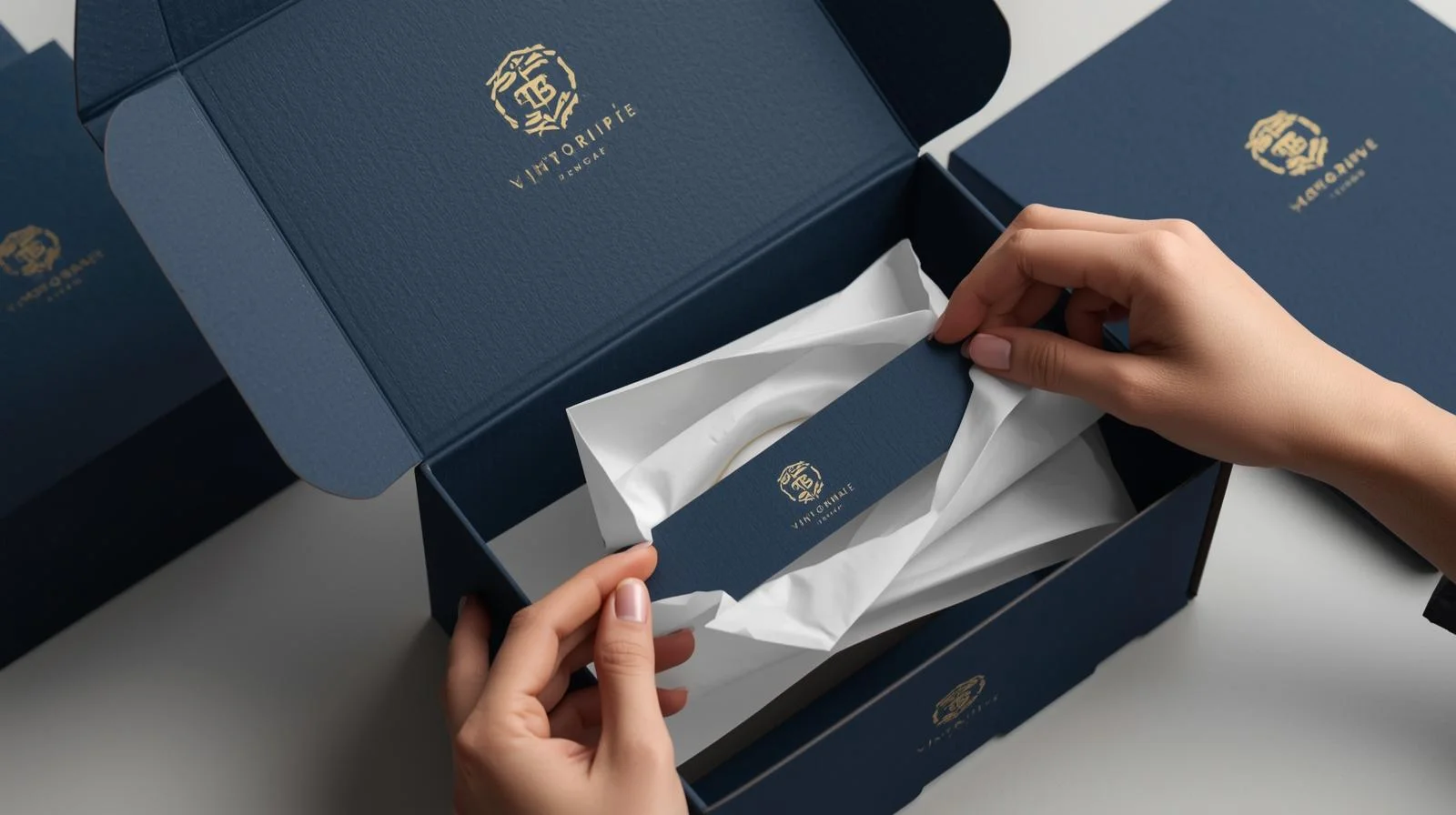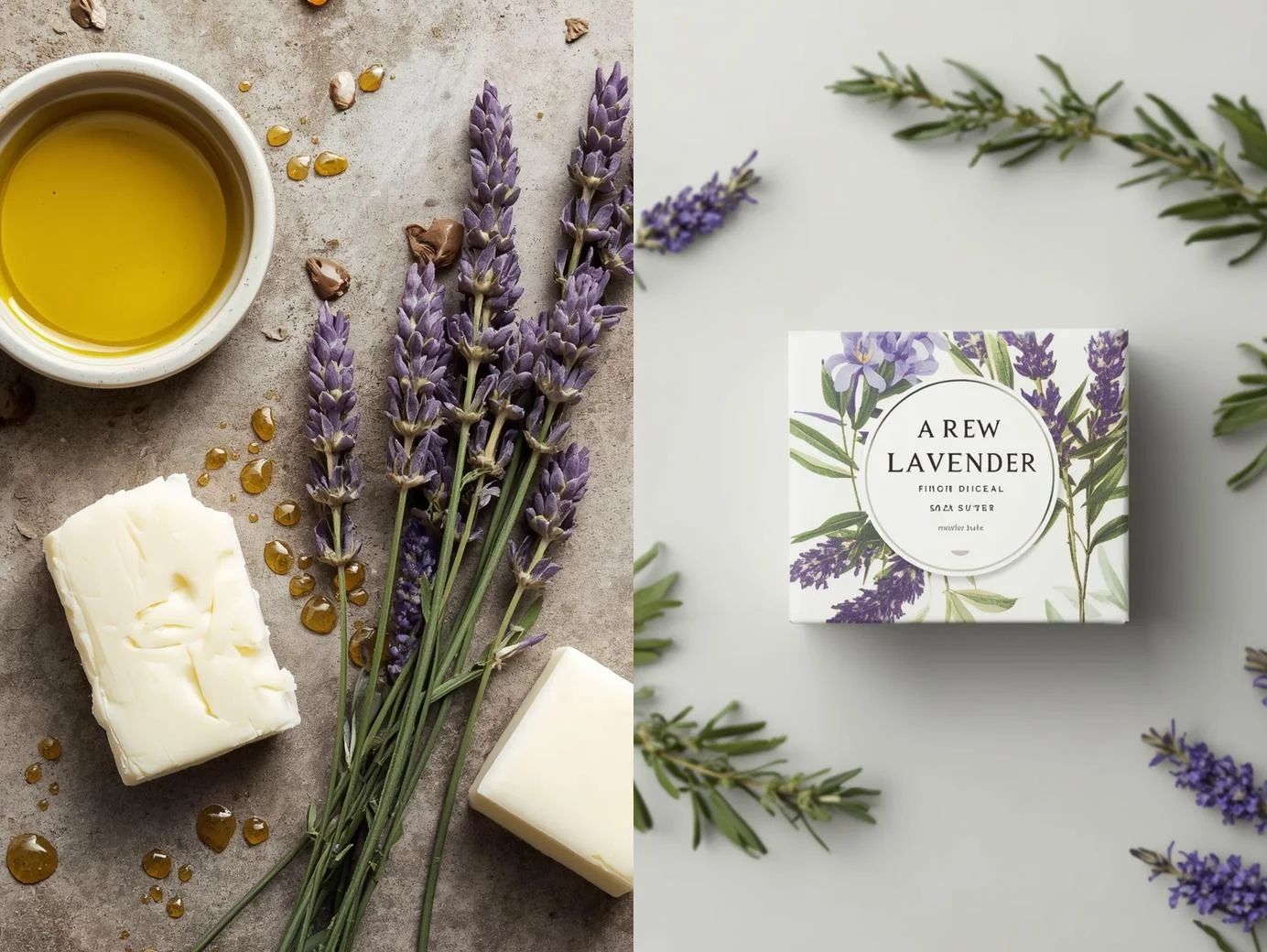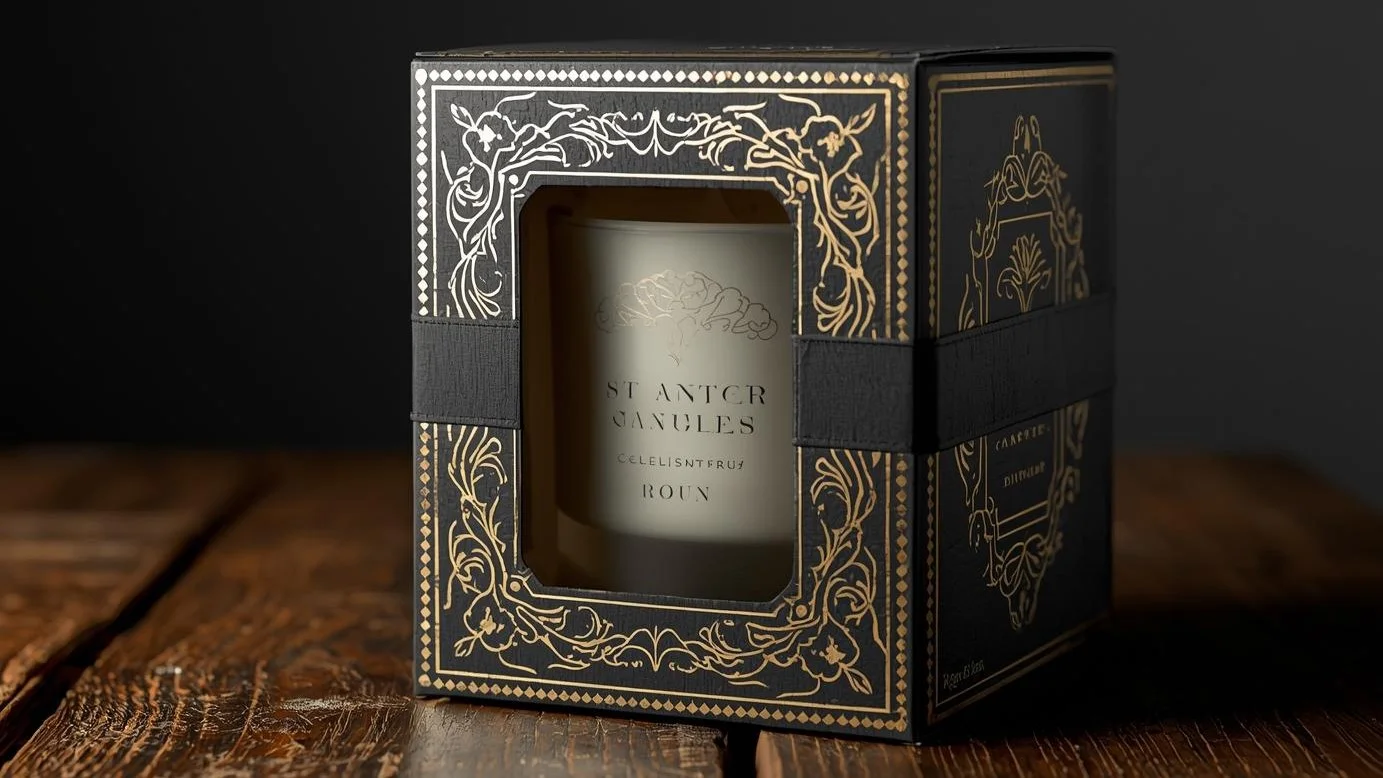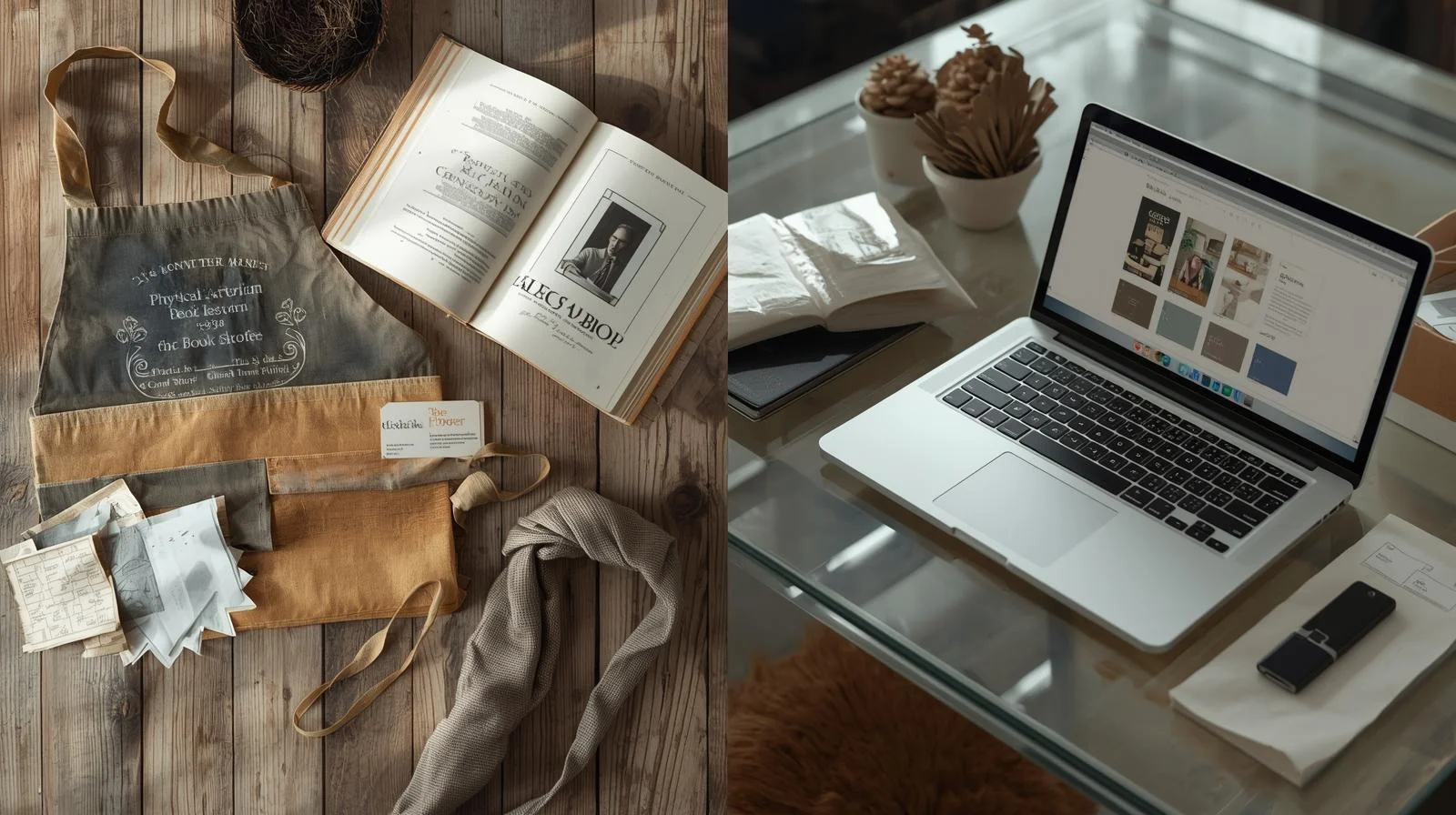Choosing between matte and glossy paper can make or break your print project. Each finish has unique qualities that affect how your images or text look and feel. This guide breaks down the differences, pros, and cons to help you pick the right paper for your needs. Whether you’re printing photos, brochures, or business cards, we’ve got you covered with clear, actionable advice.
Table of Contents
ToggleWhat’s the Difference Between Matte and Glossy Paper?
Matte and glossy papers differ in their coating and how they reflect light. These differences impact appearance, durability, and use cases.
- Glossy Paper: Has a shiny, reflective coating. It enhances color vibrancy and contrast, making images pop. The smooth surface gives a polished, professional look.
- Matte Paper: Features a non-reflective, textured coating. It reduces glare and offers a subtle, elegant finish. It’s less vibrant but great for readability.
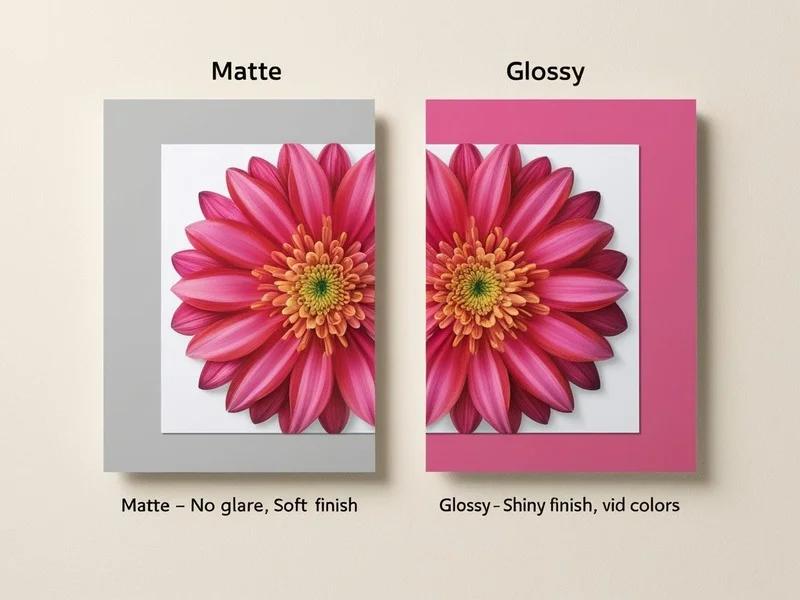
Pros and Cons of Glossy Paper
Glossy paper is popular for its bold, eye-catching finish. Here’s what you need to know.
Pros of Glossy Paper
- Vibrant Colors: The shiny surface boosts color saturation, ideal for photos or graphics.
- High Contrast: Highlights and shadows stand out, perfect for detailed images.
- Professional Look: Sleek finish suits marketing materials like brochures or posters.
- Cost-Effective: Often cheaper to print due to less ink needed.
Cons of Glossy Paper
- Glare Issues: Reflections can make it hard to view in bright light or behind glass.
- Fingerprints: Smooth surface shows smudges and dust easily.
- Stickiness: Can stick to glass or plastic, risking damage when removed.
- Not Ideal for Text: Shiny finish can reduce readability for text-heavy prints.
Pros and Cons of Matte Paper
Matte paper offers a refined, glare-free finish. Here’s a closer look.
Pros of Matte Paper
- No Glare: Non-reflective surface is easy to view in bright spaces or under glass.
- Fingerprint Resistance: Textured coating hides smudges, great for handled items like albums.
- Writable Surface: Accepts pen or pencil without smudging, ideal for planners or journals.
- Classic Aesthetic: Soft, elegant look suits black-and-white photos or fine art.
Cons of Matte Paper
- Less Vibrant: Colors appear muted compared to glossy paper.
- Ink Absorption: Can absorb more ink, leading to longer drying times.
- Higher Cost: Sometimes more expensive than glossy due to coating process.
- Less Durable: More prone to scratches than glossy finishes.
When to Use Glossy Paper
Glossy paper shines in projects where visuals take center stage. Consider it for:
- Photo Prints: Vibrant colors make wedding photos or landscapes pop.
- Marketing Materials: Brochures, flyers, and posters grab attention.
- Photo Albums: Polished look enhances keepsake photos (use interleaving sheets to prevent sticking).
- Art Reproductions: High-definition details suit colorful digital Printing art.
When to Use Matte Paper
Matte paper excels in projects needing readability or a subtle look. Use it for:
- Framed Photos: No glare makes it ideal for glass frames.
- Text-Heavy Prints: Reports, manuals, or brochures stay legible.
- Photo Books: Fingerprint resistance suits frequently handled albums.
- Black-and-White Photos: Soft finish enhances classic or vintage aesthetics.
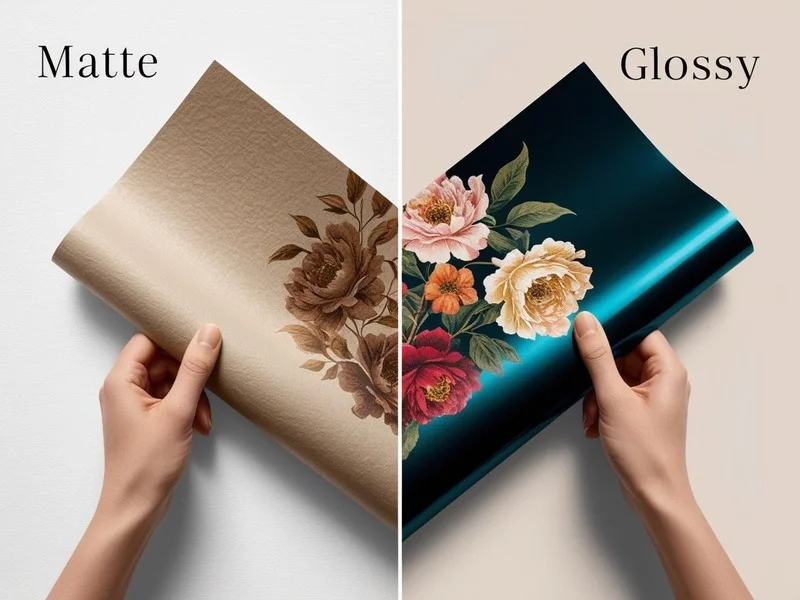
How to Choose Between Matte and Glossy Paper
Not sure which paper to pick? Ask these questions to decide:
- Where will the print be displayed? Bright spaces or glass frames favor matte to reduce glare.
- What’s the content? Colorful images benefit from glossy; text or subtle tones suit matte.
- Will it be handled often? Matte resists fingerprints and scratches better.
- What’s your budget? Glossy is often cheaper, but matte may justify the cost for professional projects.
- What aesthetic do you want? Glossy feels modern and bold; matte feels classic and refined.
Tips for Printing on Matte or Glossy Paper
Maximize your print quality with these tips:
- Use the Right Printer Settings: Select “glossy” or “matte” in your printer driver for best results.
- Test Both Finishes: Print a small sample on each paper to compare.
- Choose Compatible Paper: Ensure your paper matches your printer type (inkjet or laser).
Final Thoughts
Choosing between matte and glossy paper depends on your project’s goals. Glossy paper delivers vibrant, high-contrast prints perfect for photos and marketing. Matte paper offers a glare-free, elegant finish ideal for framed photos or text-heavy documents Best for Book Printing. Test both if you’re unsure, and consider your display conditions, content, and budget. With the right choice, your prints will look stunning and last for years.


